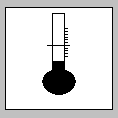| Carrots | [German version] |
Table of contents |
|
| General: | ||
| Product information | ||
| Packaging | ||
| Transport | ||
| Container transport | ||
| Cargo securing | ||
Product information
Product name
| German | Möhren, Karotten |
| English | Carrots |
| French | Carottes |
| Spanish | Zanahorias |
| Scientific | Daucus carota |
| CN/HS number * | 0706 10 00 |
(* EU Combined Nomenclature/Harmonized System)
Product description
Carrots belong to the Umbelliferae family and are thought to be of Asian origin.
Carrots, which are root vegetables, are divided into greenhouse and early carrots, summer and autumn carrots and late and keeping carrots.
Greenhouse and early carrots have a short root, which is usually blunt at the lower end, while later varieties have a long-pointed root. They are orange-red in color and consist of the central medulla and the outer cortex. Their color is provided by their high carotene content (carrots have the highest carotene content of all vegetable species). Since the medulla has a lower carotene and sugar content than the cortex, it is somewhat lighter in color and of lower nutritional value. For this reason, carrots with a thick cortex and a small, well-colored medulla are preferred. The relatively high sugar content gives carrots a delicate flavor.
The green foliage grows at the upper end of the root, and, in the case of early carrots (bunch carrots), is not removed. However, later varieties are sold washed without their foliage.
Quality / Duration of storage
Carrots must be free from mechanical damage and insects and of uniform color (the upper part of the root should not be green) and shape. They must not be bitter to taste or woody in texture.
Various sources state maximum duration of storage as follows:
| Temperature | Rel. humidity | Max. duration of storage | Source |
|---|---|---|---|
| 0.5 – 2°C | 95% | 28 days | [1] |
| 0 – 1°C | 95% | 21 – 28 days | [5] |
| 0 – 1°C | not stated | 10 days | [12] |
The storage and transport duration of carrots cannot be markedly extended by using controlled atmosphere transport. It merely reduces the risk of the carrots becoming bitter due to the ripening gas ethylene.
Intended use
Carrots may be eaten raw or cooked with various dishes and are also used in the preparation of salads, stews and carrot juice and for canning.
Figures
(Click on the individual Figures to enlarge them.)
 Figure 1 |
 Figure 2 |
 Figure 3 |
Countries of origin
This Table shows only a selection of the most important countries of origin and should not be thought of as exhaustive.
| Europe | France, Poland, Italy, Great Britain, Netherlands, Belgium, Spain, Denmark, Germany, Cyprus |
| Africa | Algeria, Morocco |
| Asia | Israel, China, Japan |
| America | USA |
| Australia | New Zealand |
Back to beginning
Packaging
Carrots are packaged in crates, fruit crates, trays, sacks, plastic bags or nets. The content of the individual packages varies, depending on type, from 500 g (bags) to 10 kg (boxes). Sometimes the cargo is palletized. If carrots are packaged in plastic film, perforations are essential. Film packaging which is impermeable to water vapor causes carrots to respire anaerobically, which in turn results in considerable quality degradation. The symptoms of such damage are soft surfaces and an insipid flavor. Anaerobic respiration proceeds in the absence of oxygen and the energy required is obtained by fermentation.
Back to beginning
Transport
Symbols
 General cargo |
 Temperature-controlled |
Means of transport
Ship, truck, railroad, aircraft
Container transport
Refrigerated container with fresh air supply
Cargo handling
Since carrots are sensitive to impact, they must be handled with appropriate care.
The required refrigeration temperature must always be maintained, even during cargo handling.
In damp weather (rain, snow), the cargo must be protected from moisture, as there is otherwise a risk of premature spoilage.
Stowage factor
| 2.40 m3/t (fruit crates) [1] | |
| 2.12 – 2.27 m3/t (crates) [1] | |
| 1.84 – 1.98 m3/t (boxes and bags) [14] |
Stowage space requirements
Cool, dry, well ventilated
Segregation
Fiber rope, thin fiber nets, wooden dunnage
Cargo securing
Because of its considerable impact- and pressure-sensitivity, packages of this cargo must be secured in such a way that they are prevented from damaging each other. Spaces between packages or pallets must be filled, to prevent slippage or tipping. By selecting the correct packaging size or cargo unit (area module or area module multiple), holds can be tightly loaded (without spaces).
Back to beginning
Risk factors and loss prevention
RF Temperature
Carrots require particular temperature, humidity/moisture and ventilation conditions (SC VII) (storage climate conditions).
A written cooling order must be obtained from the consignor before loading is begun. This order must always be complied with during the entire transport chain.
The following Table merely constitutes an estimate of appropriate temperature ranges. Temperatures may deviate from these values, depending on the particular transport conditions.
| Designation | Temperature range | Source |
|---|---|---|
| Travel temperature | 0.5 – 2°C | [1] |
| 0 – 1°C | [5] | |
| 0 – 1°C | [12] |
The supply air should never be below 0°C, as there is otherwise a risk of chilling damage [1].
Back to beginning
RF Humidity/Moisture
Carrots require particular temperature, humidity/moisture and ventilation conditions (SC VII) (storage climate conditions).
| Designation | Humidity/water content | Source |
| Relative humidity | 95% | [1] |
| 95% | [5] | |
| Water content | 75 – 89.7% | [1] |
| Maximum equilibrium moisture content | 85% | [1] |
Carrots have to be protected from all forms of moisture (seawater, rain and condensation water), to prevent the carrots from turning soft and rotting.
Back to beginning
RF Ventilation
Carrots require particular temperature, humidity/moisture and ventilation conditions (SC VII) (storage climate conditions).
Recommended ventilation conditions: circulating air, 60 – 80 circulations/hour with continuous supply of fresh air, to prevent excessive concentrations of CO2, ethylene and other gases.
Back to beginning
RF Biotic activity
Carrots display 2nd order biotic activity.
They are living organs in which respiration processes predominate, because their supply of new nutrients has been cut off.
Care of the cargo during the voyage must be aimed at controlling respiration processes (release of CO2, water vapor, ethylene and heat) in such a way that the cargo is at the desired stage of ripeness on reaching its destination. Inadequate ventilation may result in fermentation and rotting of the cargo as a result of increased CO2 levels and inadequate supply of atmospheric oxygen (see Ventilation).
Back to beginning
RF Gases
| CO2 evolution | During storage, carrots evolve CO2 by respiration processes. |
| Upper limit of permissible CO2 content | 0.8 vol.% |
| Ethylene evolution | |
| Active behavior | The rate of ethylene production is very low, being below 0.1 µl/kg*h [16]. |
| Passive behavior | Ethylene sensitivity may be classified as low [16] (allelopathy). |
If ventilation has been inadequate (frost) or has failed owing to a defect, life-threatening CO2 concentrations or O2 shortages may arise. Therefore, before anybody enters the hold, it must be ventilated and a gas measurement carried out.
Back to beginning
RF Self-heating / Spontaneous combustion
No risk.
Back to beginning
RF Odor
| Active behavior | Carrots have a slight, pleasant odor. |
| Passive behavior | Carrots are highly odor-sensitive. |
Back to beginning
RF Contamination
| Active behavior | Washed carrots do not cause contamination, but unwashed carrots may do. |
| Passive behavior | The cargo is sensitive to dirt, fats and oils. The holds or containers must accordingly be clean and in a thoroughly hygienic condition before loading. |
Back to beginning
RF Mechanical influences
Carrots are sensitive to mechanical stresses. Carrots should be treated with care during cargo handling, transport and storage, since otherwise they may spoil prematurely.
Back to beginning
RF Toxicity / Hazards to health
If ventilation has been inadequate (frost) or has failed owing to a defect, life-threatening CO2 concentrations or O2 shortages may arise. Therefore, before anybody enters the hold, it must be ventilated and a gas measurement carried out. The TLV for CO2 concentration is 0.49 vol.%.
Back to beginning
RF Shrinkage/Shortage
Weight loss is below 1%. However, carrots require high relative humidity, as they have a tendency to dry out.
Back to beginning
RF Insect infestation / Diseases
Carrot fly: the carrot fly causes considerable quality degradation.
Sclerotinia rot: in carrots, the soft rot caused by the fungus Sclerotinia sclerotiorum produces a white mycelium with silvery droplets and hard, black spots. The root body softens from the outside inwards.
Gray mold rot: the fungus Botrytis cinerea causes gray mold rot, which is encouraged by dry storage. In addition to acquiring a coating of mold, the carrots shrink.
Fusarium rot: Fusarium rot is caused by the fungus Fusarium spec. and results in decay of the outer tissue. At particular risk are physiologically and mechanically damaged carrots in highly ventilated holds. Losses may amount to 5 – 15%. The losses are even greater in the case of carrots packaged in polyethylene film.
The quarantine regulations of the country of destination must be complied with and a phytosanitary certificate may have to be enclosed with the shipping documents. Information may be obtained from the phytosanitary authorities of the countries concerned.
Chilling damage: carrots suffer chilling damage at 0°C. The vegetables display surface cracks and the roots grow pale.
Back to beginning
